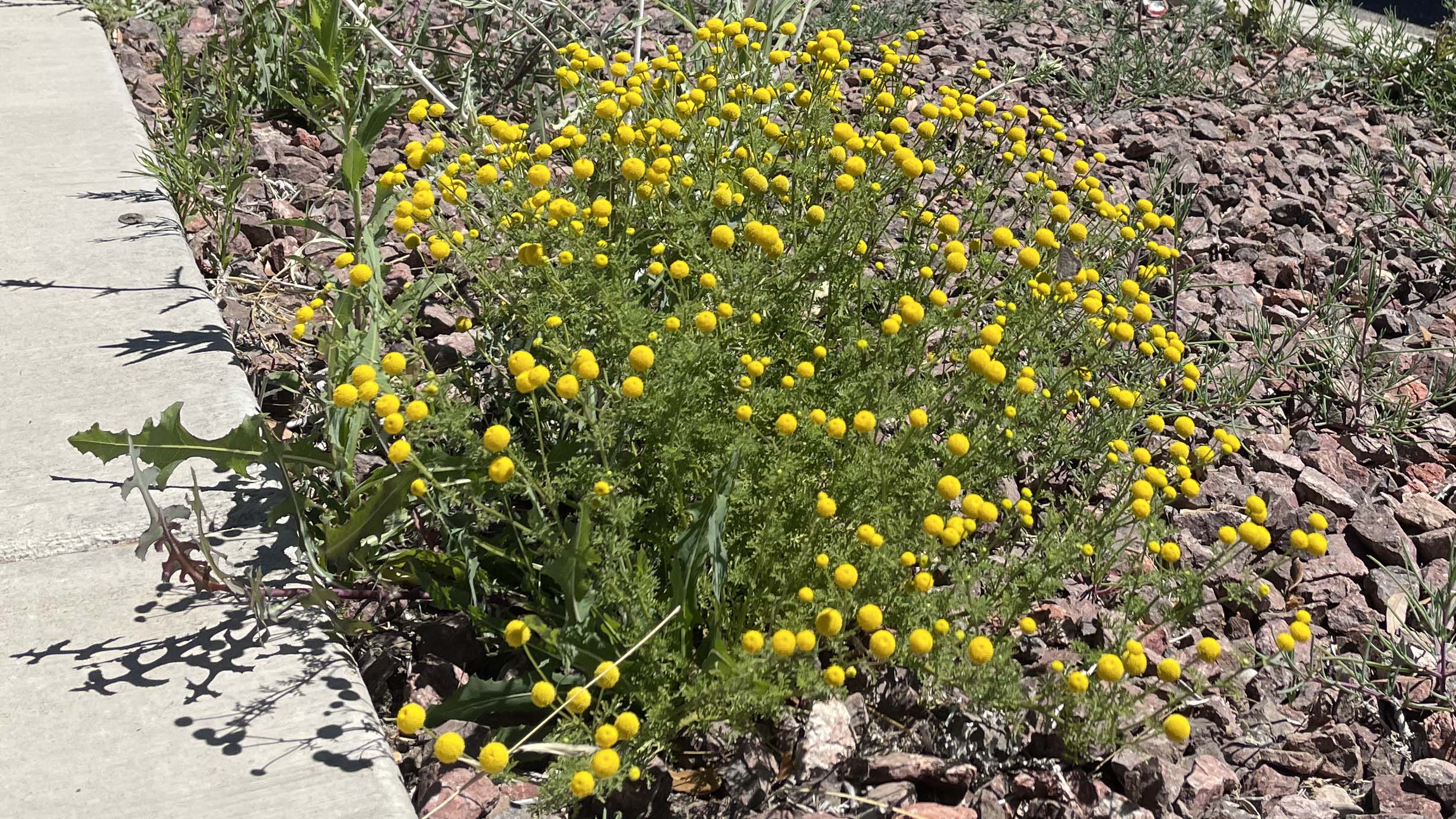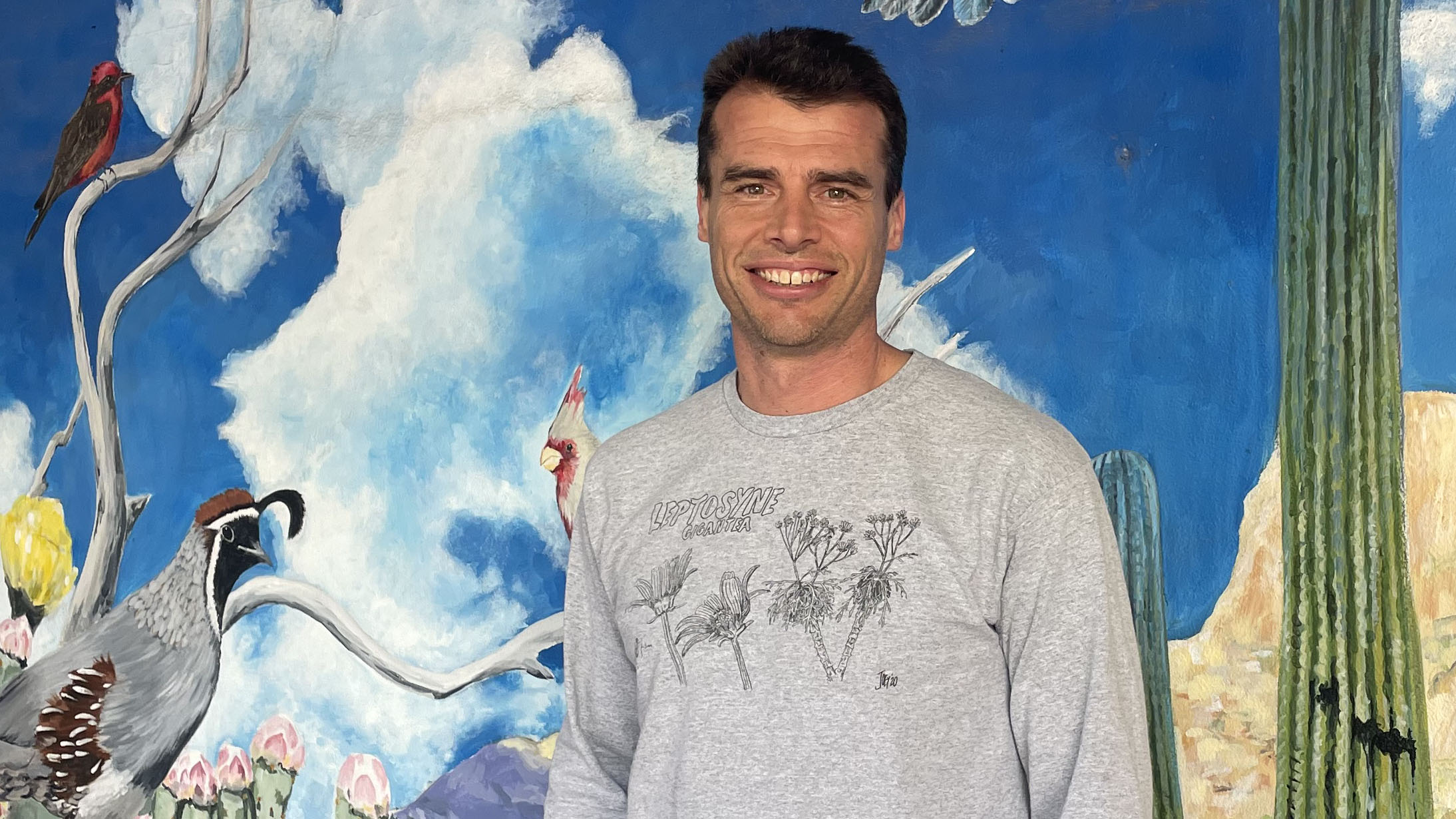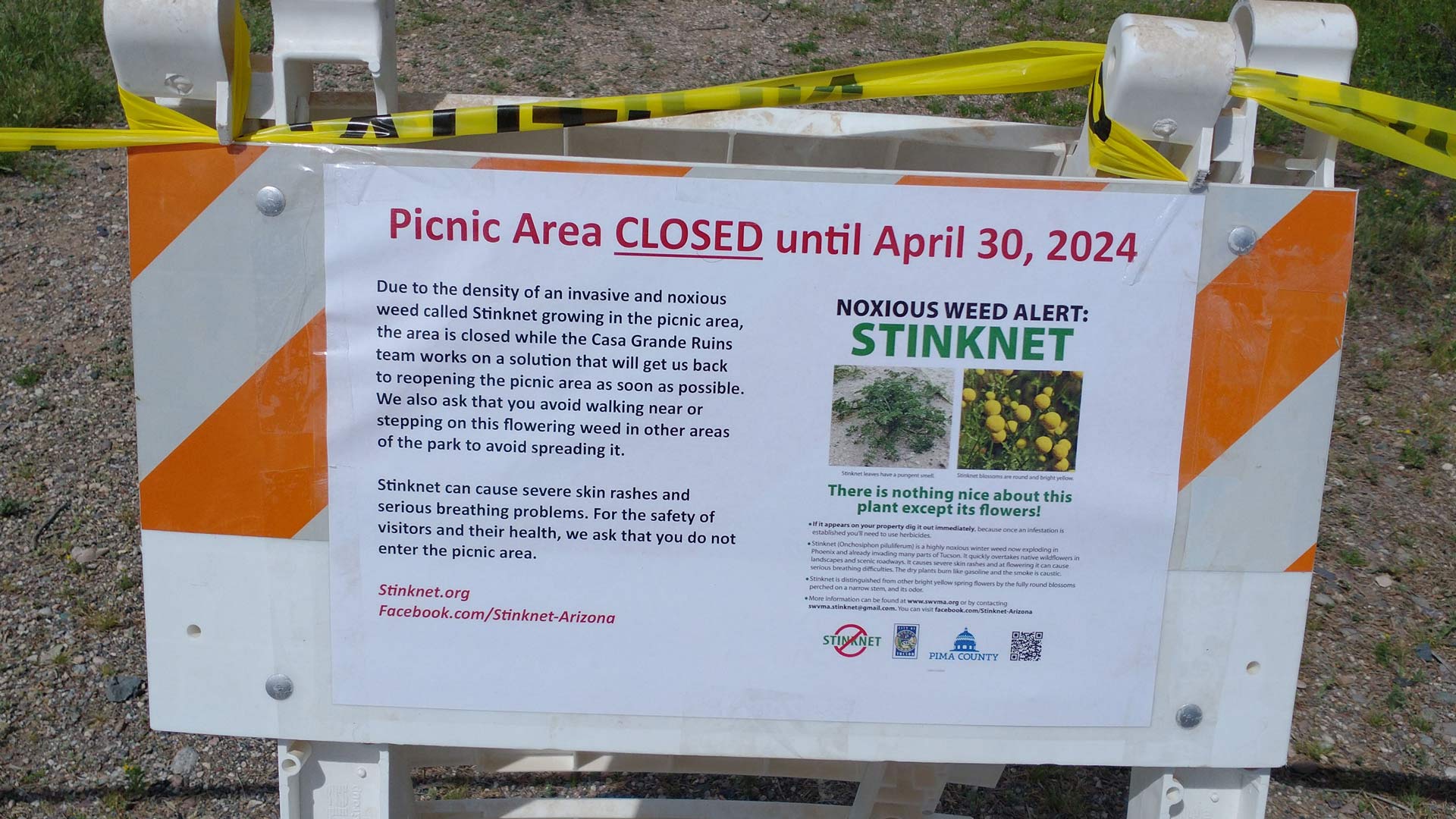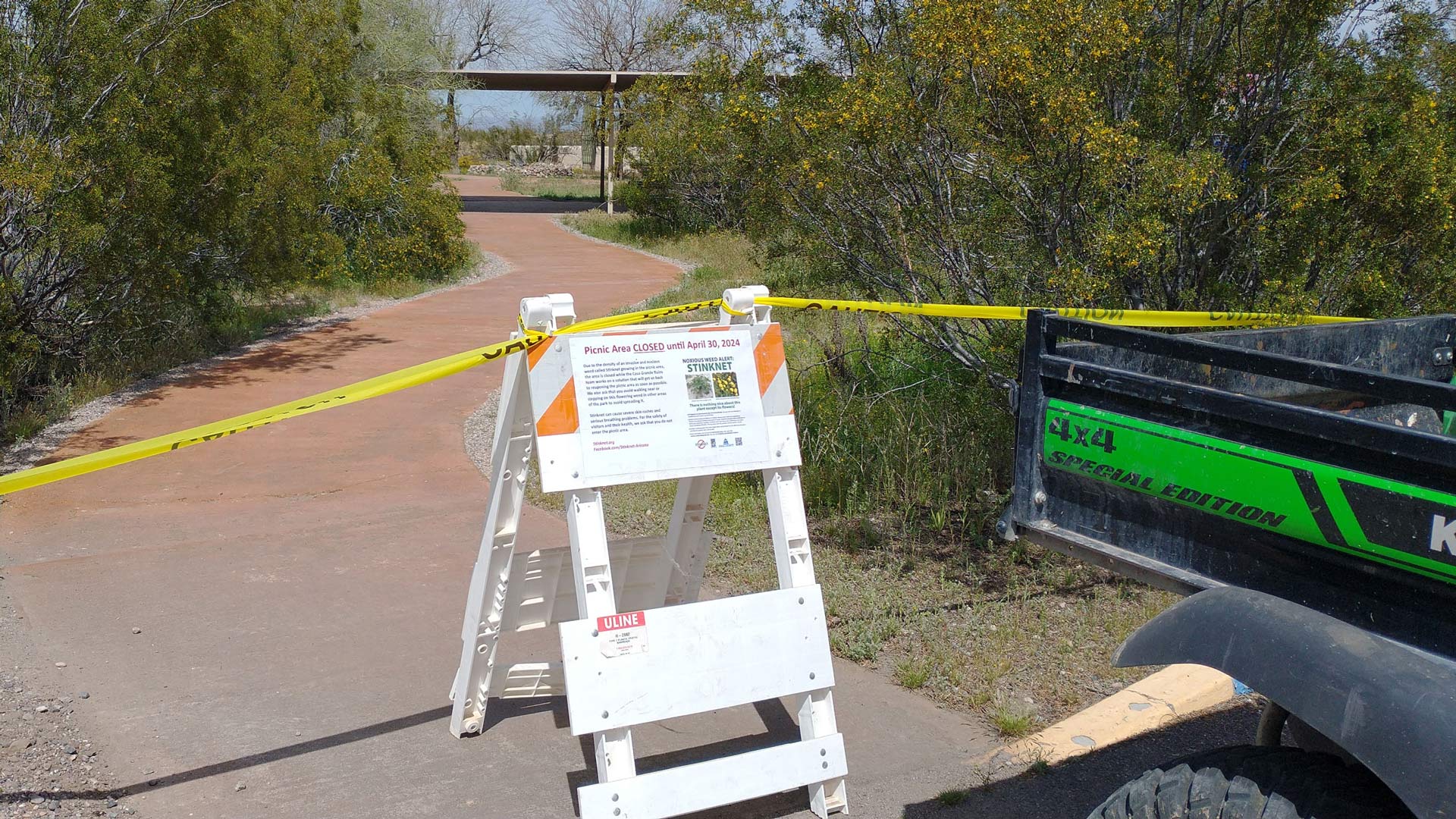 Stinknet (Oncosiphon pilulifer) is a highly invasive wildflower that is spreading across Arizona.
Stinknet (Oncosiphon pilulifer) is a highly invasive wildflower that is spreading across Arizona.
Stinknet, Oncosiphon pilulifer, is a low-growing weed that produces sphere-like yellow flowers, and while it may look appealing to the casual observer, those who know more about our natural environment are worried.
Tony Figueroa is the senior manager for the Invasive Plant Program at the Tucson Audubon Society, and he's working with others on eradicating the plant pest.
"It's not just your standard dandelion invasive species that's like, 'oh, that's a pretty flower,'" Figueroa says.
Each of the invasive stinknet plants can produce thousands of seeds that will carpet a field, and the biomass accumulation poses a risk to the environment and human health.
"When the plant is handled extensively by people with sensitive skin, the oils in the leaves have been reported to cause rashes and blistering. The pollen from the flowers can lead to headaches and just general irritability. There have been reports of people having asthmatic reactions from this," he says.
Surrounding properties are also endangered because once the plants dry out, they are highly flammable and can fuel fires.
"The Tonto [National Forest] near Phoenix has had fires that have been a result of stinknet infestations. So it is a very important thing for the community to get out there, look for this plant right now. If you see a yellow flower, with a sphere shape and it doesn't have any petals on it's most likely stinknet," Figueroa says.
"Pull it out of the ground."
 Tony Figueroa, and invasive plant expert at Tucson Audubon Society, in front of the office's mural.
Tony Figueroa, and invasive plant expert at Tucson Audubon Society, in front of the office's mural.
Figueroa is working with people from other agencies to remove the plant in southern Arizona, which has already become established in many fields in the Phoenix metropolitan area.
"We really want to stop this because it's really conquered Maricopa County and we're trying to do our best to preserve Tucson and our Sonoran Desert here," Figueroa adds.
If you think you've seen the plant around you, Figueroa asks that you please report infestations at stinknet.org.
 A picnic area has been closed during an eradication effort at this site in Pima County.
A picnic area has been closed during an eradication effort at this site in Pima County.
 A picnic area has been closed during an eradication effort at this site in Pima County.
A picnic area has been closed during an eradication effort at this site in Pima County.

By submitting your comments, you hereby give AZPM the right to post your comments and potentially use them in any other form of media operated by this institution.